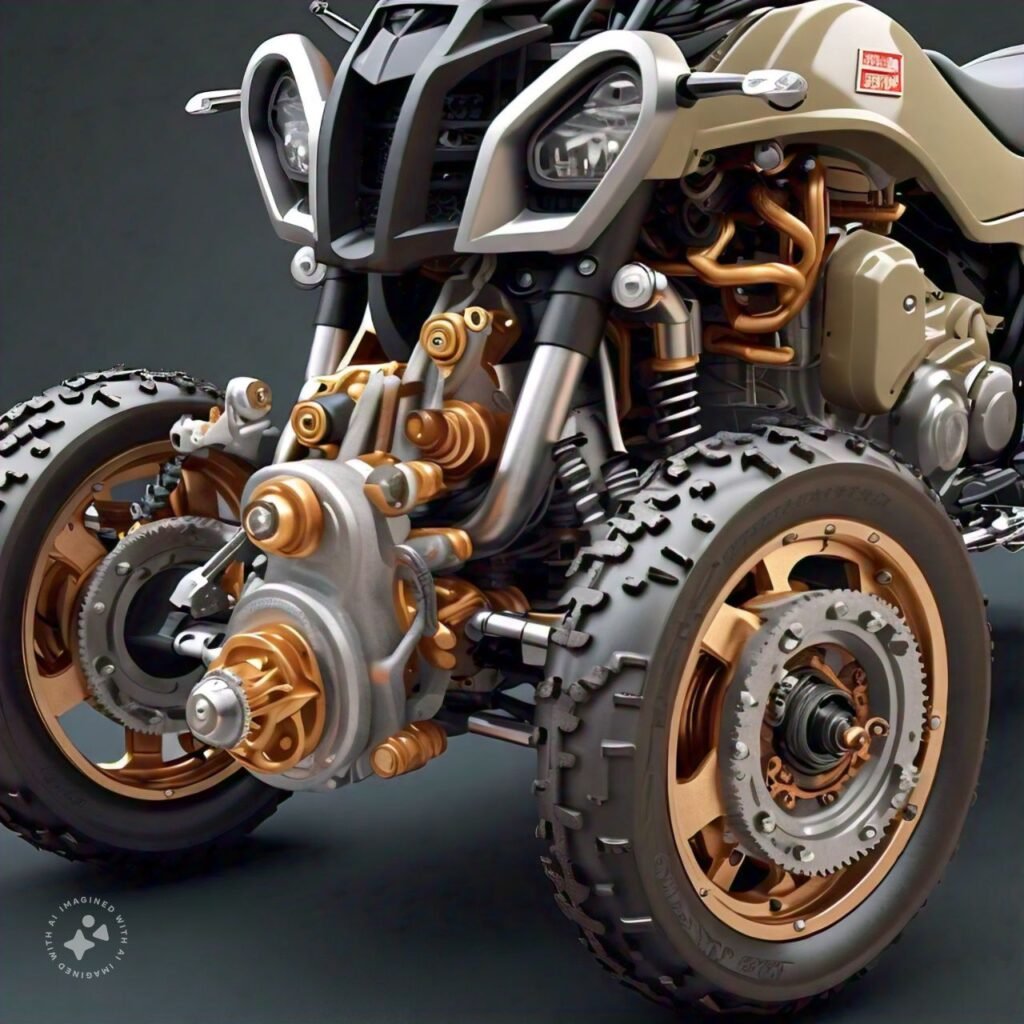When it comes to off-road adventures, few vehicles can match the versatility and thrill of an All-Terrain Vehicle (ATV).
These rugged machines are designed to conquer challenging terrains and provide an exhilarating experience for riders.
One of the key components that enable an ATV to perform its best is the power train, which delivers the torque from the engine to the wheels.
The Role of the Transmission
The transmission plays a crucial role in transferring power from the engine to the wheels of an ATV.
It is responsible for controlling the gear ratios and ensuring that the engine’s torque is delivered efficiently to the wheels.
In most ATVs, the transmission is a continuously variable transmission (CVT) system.
Unlike traditional manual transmissions, a CVT uses a system of belts and pulleys to provide smooth and seamless gear shifting.
The CVT in an ATV allows the engine to operate at its optimal RPM range, maximizing power delivery and fuel efficiency.
The CVT adjusts the gear ratio based on the speed and load conditions, ensuring that the engine is always operating in the most efficient range.
This not only improves the overall performance of the ATV but also enhances the riding experience for the user.
The Role of the Drivetrain
While the transmission transfers power from the engine to the wheels, the drivetrain is responsible for distributing that power to all the wheels of the ATV.
The type of drivetrain used in an ATV depends on its design and intended purpose.

Most modern ATVs use one of three types of drivetrain systems:
rear-wheel drive (2WD), front-wheel drive (4WD), or all-wheel drive (AWD).
In a rear-wheel drive ATV, power is delivered to the rear wheels only.
This configuration is suitable for general off-road use and provides good traction on various terrains.
Front-wheel drive ATVs, on the other hand, deliver power to the front wheels.
This setup is ideal for tackling steep inclines or slippery surfaces, as it provides better traction and stability.
Front-wheel drive ATVs are commonly used in utility and work-related applications.
For maximum traction and off-road capability, some ATVs feature an all-wheel drive system.
AWD ATVs can distribute power to all four wheels, providing superior traction on challenging terrains such as mud, snow, or rocky surfaces.
The AWD system can automatically adjust the power distribution based on the wheel slip, ensuring optimal performance in any condition.
The Role of the Differential
In addition to the transmission and drivetrain, the differential also plays a vital role in an ATV’s power delivery system.
The differential allows the wheels to rotate at different speeds while still receiving power from the engine.
This is crucial when turning, as the outer wheel needs to travel a greater distance than the inner wheel.
Without a differential, the wheels would be forced to rotate at the same speed, which would result in tire scrubbing and poor maneuverability.
The differential allows the wheels to rotate independently, ensuring smooth turns and better handling.
Some ATVs are equipped with a locking differential, which can be engaged to provide equal power to both wheels, regardless of traction conditions.
This is particularly useful in situations where maximum traction is required, such as climbing steep hills or traversing uneven terrain.
Conclusion
Above all, The power train of an ATV is a complex system that ensures the engine’s torque is efficiently delivered to the wheels.
Also, The transmission, drivetrain, and differential work together.
To provide optimal power distribution and traction.
allowing the ATV to conquer various terrains with ease.
So, Whether you’re a thrill-seeker looking for an adrenaline-pumping off-road adventure.
or a utility user in need of a reliable workhorse.
Finally, understanding how the power train delivers torque from the engine to the wheels will help you make informed decisions when choosing an ATV that suits your needs.




